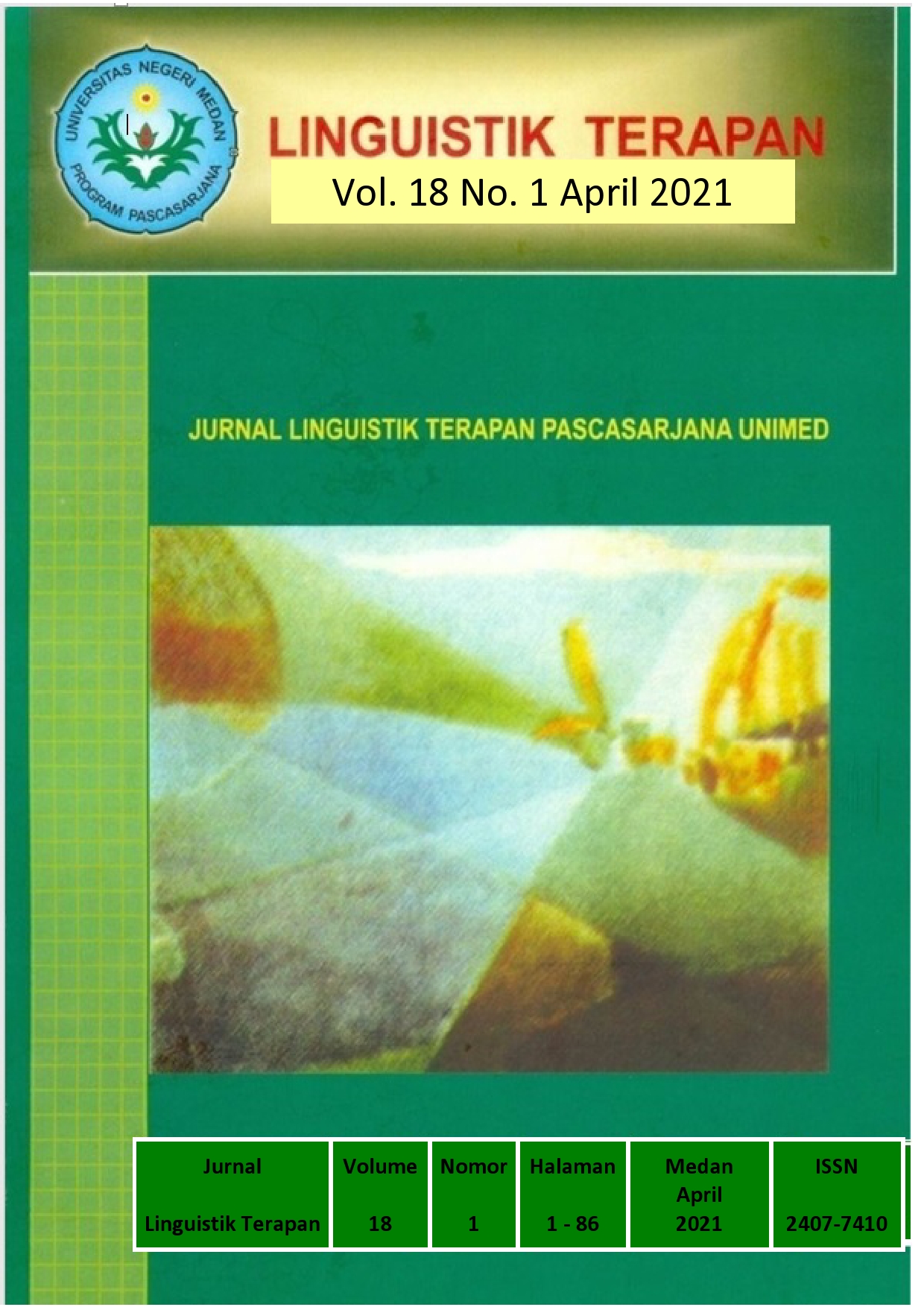INTERTEXTUALITY REALIZATION IN SARI MATUA CEREMONY
DOI:
https://doi.org/10.24114/lt.v18i1.25364Abstract
ABSTRACTThis study aims to describe the realization of intertextuality occurences in sari matua ceremony. This research is conducted qualitatively by applying technique analysis of Bazerman. The data are utterances which delivered by the speakers in the ceremony and transcribed into transcription. Sari Matua is one kind of death ceremony in batak toba culture and has been studied in other particular field of study. In this study, intertextuality occurrence are studied on oral discourse in Sari matua batak toba ceremony. Sari matua batak toba ceremony consisted of two sessions which are Martonggo Raja and main ceremony and this study focuses on these two sessions. The result of this study shows that there were 50 specific data found from 82 specific data which included kinds of intertextuality namely qutotation, reference, and allusion. The realization of intertextuality occurences in sari matua Batak Toba ceremony is realized by some elements of intertextuality itself. The realization Quotation is identified through the presence of lexical expressions such as mandok, manungkun, hatahononku, di dok, pinasihat. Reference is identified by seeing clause which reflected to, re-contextualized to dan re-accentuated to. Allusion is identified by clause complex which referring the text to literature, historical art, story, person even place. The intertextuality occurences realized in sari matua Batak Toba ceremony because the text which quoted, referred to and alluded to from the past time can be reflected in ourlives in the present time. Key words: Intertextuality, Oral Discourse, Batak Toba Ceremony, Sari MatuaDownloads
Published
2021-06-03
How to Cite
Hutagalung, D. Y., Pulungan, A. H., & Husein, R. . (2021). INTERTEXTUALITY REALIZATION IN SARI MATUA CEREMONY. LINGUISTIK TERAPAN, 18(1), 10–18. https://doi.org/10.24114/lt.v18i1.25364
Issue
Section
Articles






